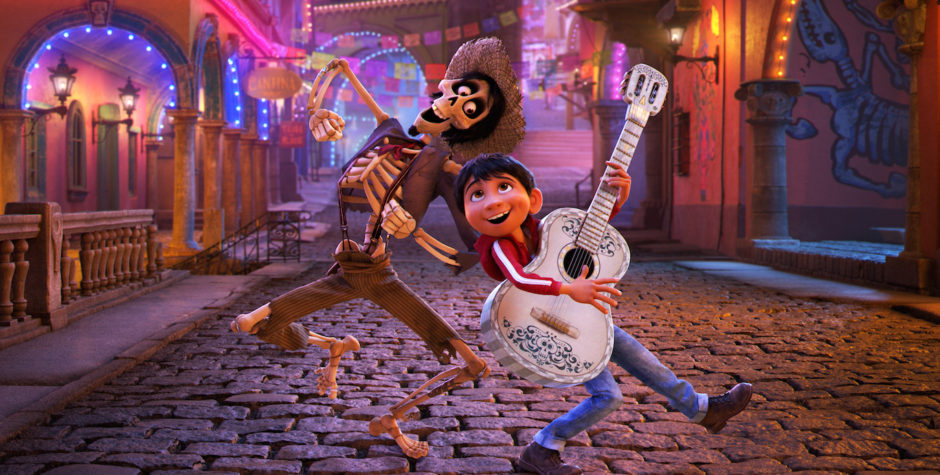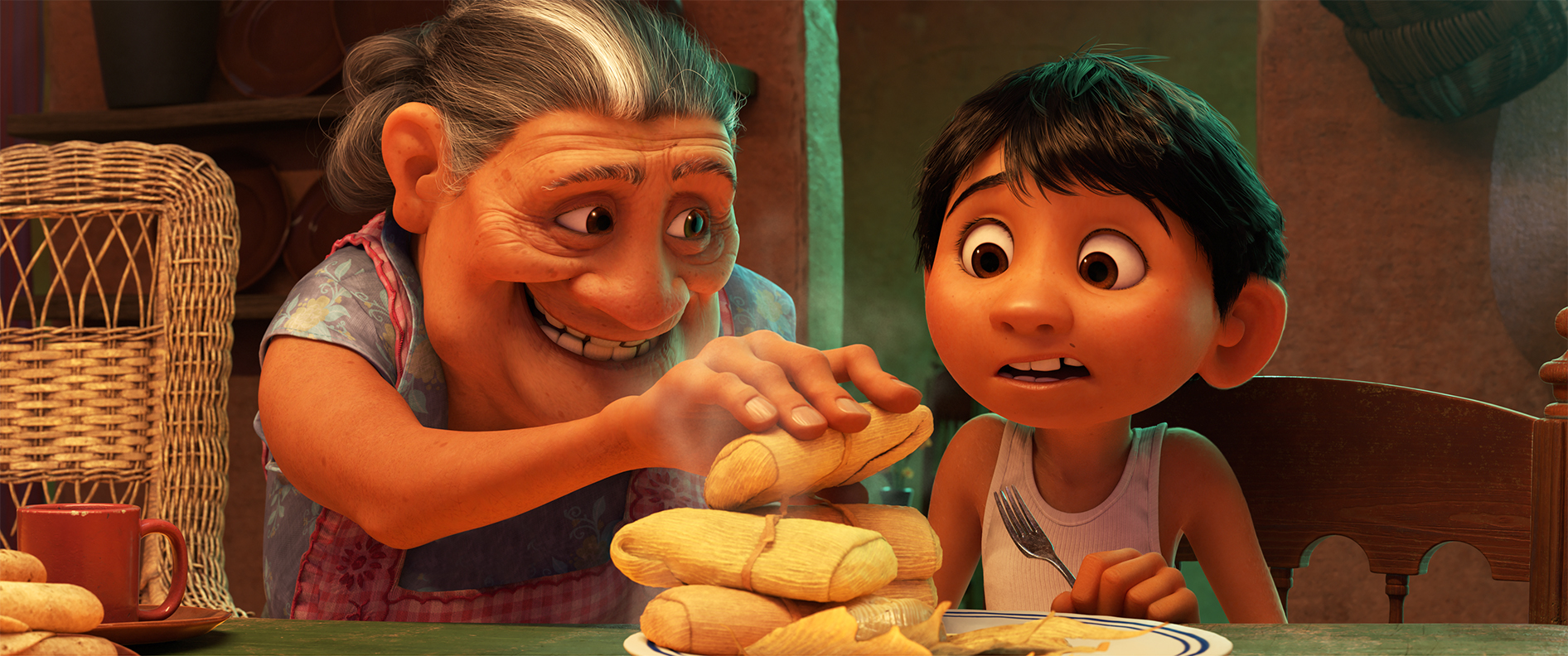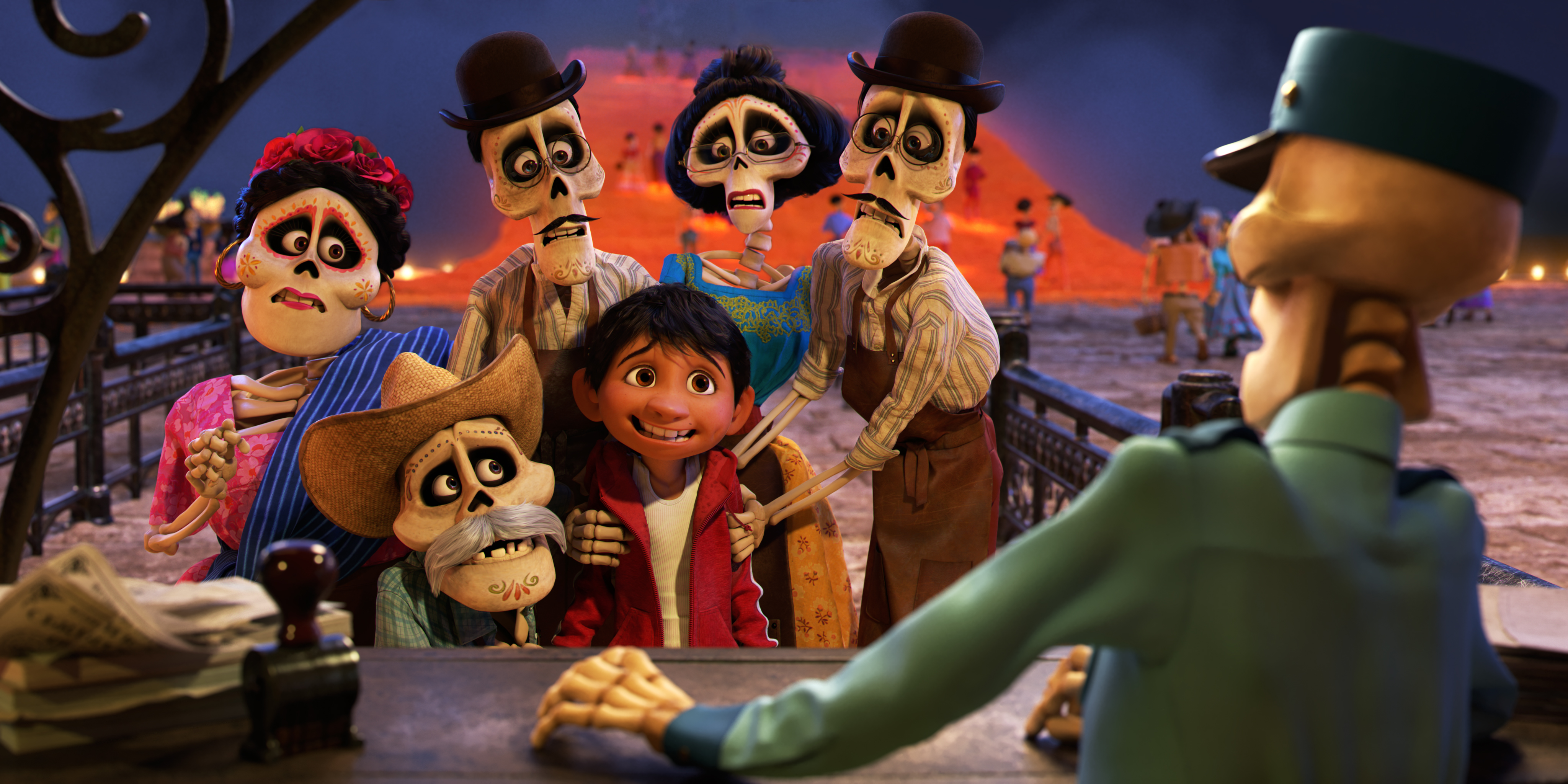11.23.2017 | By Jack Rico |
“Coco,” the 19th film from Pixar, is a return to form for the stumbling animation company which has re-found its footing with its colorful characters, striking vivid cinematography, and a heartwarming story of family and tradition. Set in Mexico, a young boy (Anthony Gonzalez) dreams of becoming a musician just like his great-great-grandfather Ernesto de la Cruz (Benjamin Bratt). But when his family prohibits him from playing music, he finds himself magically transported to the Land of the Dead on Dia de Los Muertos meeting his past relatives and discovering a deeper connection to himself and to his family’s history.
A Celebration of Mexican Culture
This joyous love letter to Mexico about keeping alive the memories of relatives long gone is more than a holiday recipe on Pixar’s slate, it is a turning point for a studio that in its 22-year history has never developed or created diverse or cultural stories on screen. Although the argument can be made that many of Pixar’s movies, whose protagonists are mostly animals or objects, can already be viewed as proxies for over 100 ethnicities in the world, the significance of seeing brown-skin colors represented on the giant screen is very powerful to the psyche of whoever embodies it, in particular children.
As John Leguizamo so effectively describes in his article about Latino underrepresentation, from where does the Latin youth draw role models and experiences? A youth that still grapples with identity. A youth that must still learn to fill a historic void for itself, omitted from the history books and omitted from current pop culture.
Impact of Watching Brown Skin on Screen
Accustoming general audiences to brown skin in animation normalizes the idea that Latino and other minority stories can be relatable to all Americans. Much like Lin-Manuel Miranda’s Broadway musicals ‘In The Heights’ and ‘Hamilton’, they establish that Latino characters and stories can crossover successfully to commercial and universal acclaim. Studios will have to strongly consider creating more Latino stories to maintain and grow their bottom line. Also, let us not forget that Pixar’s testimony that it can thrive with multicultural content could spur a boom in Latino storytelling in animation in the US. Its effect could ripple into the casting and, hiring of more Latino actors, directors, and animators. Imagine future animated movies set in Argentina or Peru.
Transformative Power of Inclusion
The impact can be transformative. The latent, underlying feelings of inclusion, of equality, a reality that many of our parents and abuelos were never able to experience, could give rise to a new generation of self-assured Latinos inspired to become future leaders in the boardroom or even political office. In a world where we are more socially conscious than we have ever been before, diversity does matter, telling the stories of our ancestors does matter, and seeing ourselves represented in the apotheosis of American culture absolutely matters.
Enough with blaming Hollywood for its lack of vision and disregard for Census statistics. At some point, Latinos, the largest moviegoing demographic in the U.S., need to use their power at the box office to change outdated perceptions and inject new notions of how we should be perceived. If we do, the far-reaching effects can reframe the national conversation as we know it.
Coco’s Future and Legacy
Several animated films have already centered around Hispanic folklore such as Carlos Saldanha’s 2011 Rio, Juan Jose Campanella’s 2013 Metegol, and Jorge Gutierrez’s The Book of Life from 2014. This last film generated shy of $100 million at the global box office during its full release, but Coco is already projected to earn $60 million in its opening weekend, and that’s just domestically. The vast distribution power of Disney’s Pixar means more theaters, more young viewers, and ultimately, a more far-reaching multicultural audience ready to embrace its new, bold identity.
In my Highly Relevant podcast interview with Adrian Molina, the Mexican-American co-director of Coco and the first Hispanic director of a Pixar film, he shared that the secret to translating Pixar’s stories across all social institutions begins with finding the common humanity in any story. It has been something that I’m very thankful and very proud of, the fact that the studio always wanted to present this story in a way that people like me could be proud of, that the country of Mexico could be proud of, says Molina. He added, it also has an optimistic and important message for people who may be unfamiliar with this tradition and the family structure. They would hopefully see something that they recognize.
The larger takeaway from a historic film like this is that Coco is no longer the representation of silly hopes and dreams. It is a distinct manifestation of what Latino stories can realize when told in the grandest of stages.






























